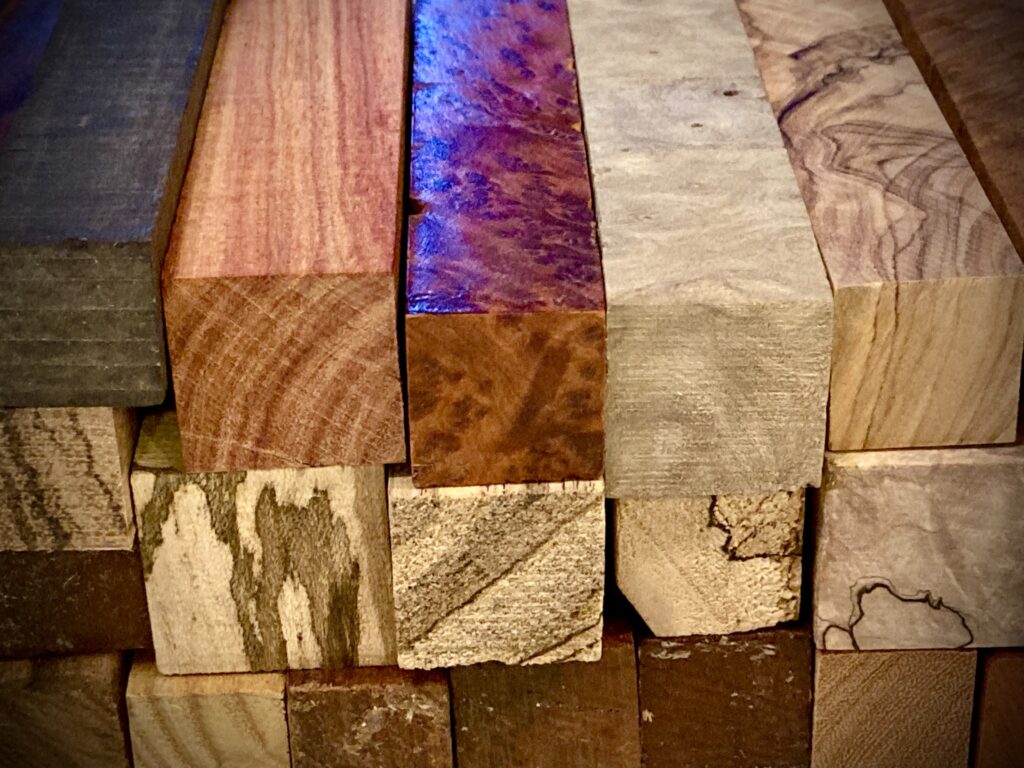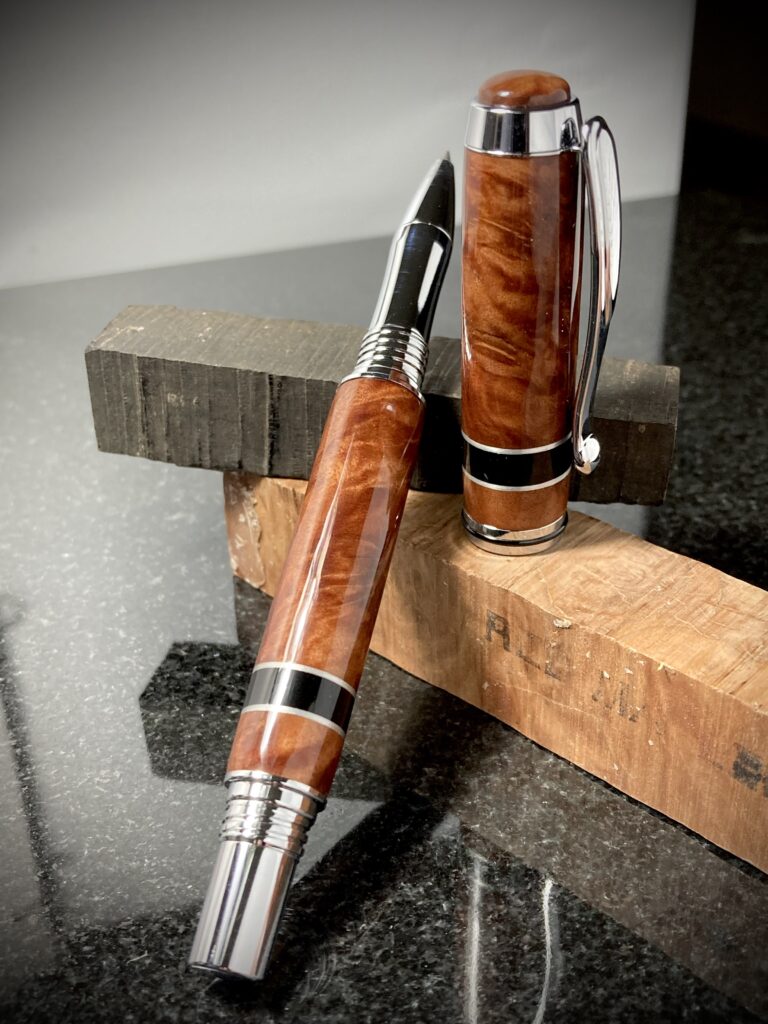
Making a pen simply starts with selecting a piece of material.
I usually start with a bit of curly, figured, exotic, or burl wood. I have collected an inventory of woods imported from all over the world, but have also used wood from a tree that came down in my own backyard. I like to use woods that have a story with them, such as wood that came from an old barn, a church pew, or was grown on a historic property like an olive orchard in Israel. The beauty of the pen, and the story that it tells, comes from the material it is made from.
Sometimes the wood stands alone and is the real work or art. Other times I mix different materials together, called segmenting. Segments may be of wood, soft metals, colored resins, pvc, paper, fabric, antler, or any number of items. I have also made pens using resin blocks that I made myself, containing colored pigments, pinecones, or dried flowers.
The wood is cut to length and a sized hole is drilled through the center to make space for the ink. The brass tube is glued into the hole to support the wood. The wood is spun on the lathe at 3,000 rpms and turned down to a very precise diameter. It must be within a few thousandths of an inch to match the rest of the pen components. It requires several chisels with different cutting techniques. The last cut should leave no visible tool marks and be perfectly clean. I turn it to rough size using a mandrel and then remove the mandrel and turn it between a live and dead center to make sure it stays precisely round with very little margin for error.
Then the wood is cleaned with acetone and denatured alcohol to remove any oil from the surface and a finish is applied. I have applied several different kinds of finishes, but my best finish is cyanoacrylate. It is applied wet which brings out the grain of the wood, and dries clear, durable, and watertight. It is then wet-sanded to 12,000 grit to remove even the finest of scratches. I sand the ends gently until perfectly square, clean the brass tube, and polish the outside using a series of fabric wheels to give the finished object a glassy shine.
The pens are then assembled using high quality components and inks. The result is a showpiece for your desk or pocket. These are not single use pens but are designed to be refilled with bottled ink or commercially available ink refills.


